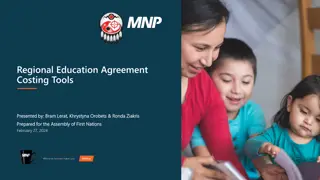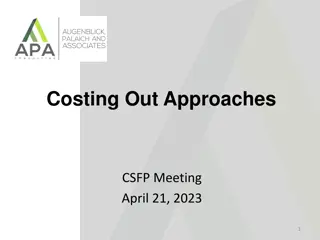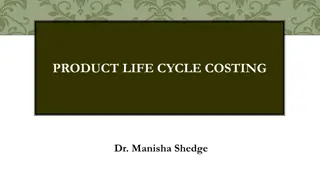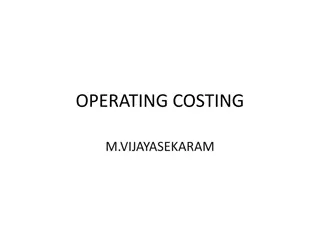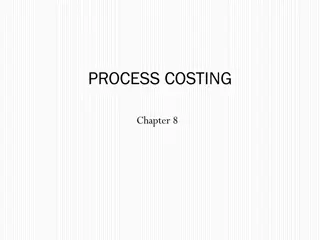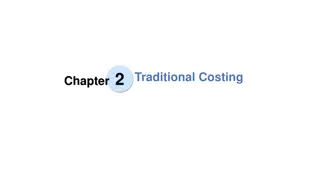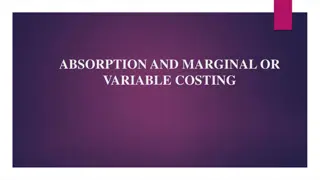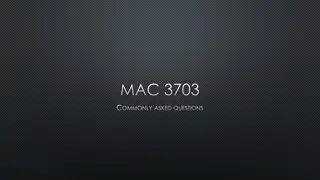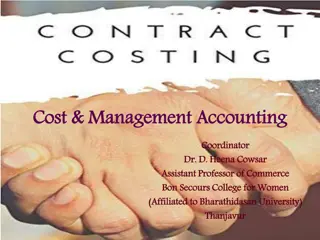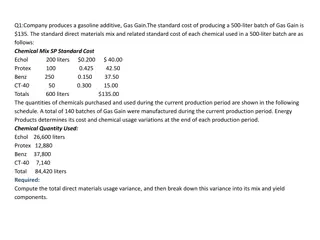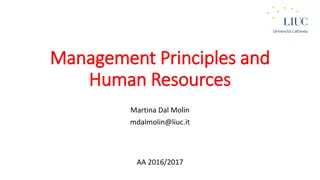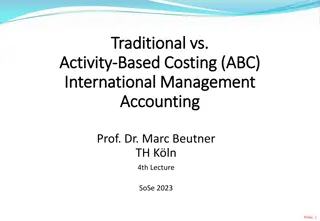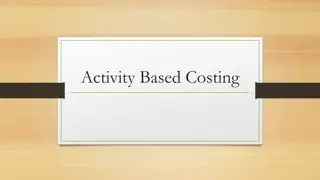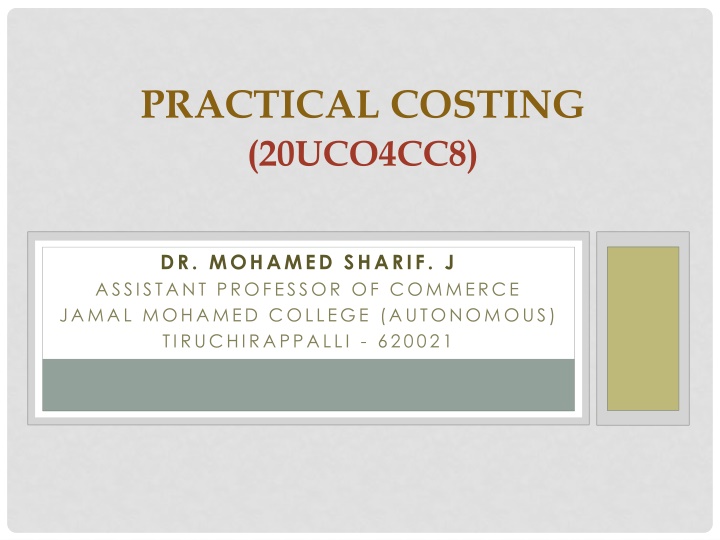
Cost Accounting Principles and Techniques
Learn about the meaning, definition, scope, and nature of cost accounting, as well as the distinction between cost accounting and financial accounting. Explore the concepts of costing, cost accounting, cost control techniques, budgeting, and cost audit in this comprehensive guide to managing costs effectively in business.
Download Presentation

Please find below an Image/Link to download the presentation.
The content on the website is provided AS IS for your information and personal use only. It may not be sold, licensed, or shared on other websites without obtaining consent from the author. If you encounter any issues during the download, it is possible that the publisher has removed the file from their server.
You are allowed to download the files provided on this website for personal or commercial use, subject to the condition that they are used lawfully. All files are the property of their respective owners.
The content on the website is provided AS IS for your information and personal use only. It may not be sold, licensed, or shared on other websites without obtaining consent from the author.
E N D
Presentation Transcript
PRACTICAL COSTING (20UCO4CC8) DR. MOHAMED SHARIF. J ASSISTANT PROFESSOR OF COMMERCE JAMAL MOHAMED COLLEGE (AUTONOMOUS) TIRUCHIRAPPALLI - 620021
MEANING "Cost is the amount of resource given up in exchange for some goods and services. The resource given up are money and money's equivalent expressed in monetary units". "Cost accounting is concerned with recording, classifying and summarizing cost for determination of cost of products or services, planning, controlling and reducing such costs and furnishing of information to management for decision making".
DEFINITION "Cost accountancy" as the application of costing and cost accounting principles, method and techniques to the science, art and practice of cost control and the ascertainment of profitability.
Costing: The technique and process of ascertaining the cost. Cost Accounting: That branch of accounting dealing with the classification, recording, allocation, summarisation and reporting of current and prospective costs. Cost Control Techniques: The guidance and regulation by executive action of operating an undertaking."
Budgeting: An overall blue print of a comprehensive plan of operations and actions expressed in financial terms. Cost Audit: The verification of the correctness of cost accounts and of the adherence accounting plan. to the cost
NATURE OF COST ACCOUNTING Cost accounting is a branch of knowledge Cost accounting is a science Cost accounting is an art Cost accounting is a profession
DISTINGUISH BETWEEN COST ACCOUNTING & FINANCIAL ACCOUNTING Cost Accounts Financial Accounts Its purpose is internal reporting, i.e., to the management business. Its purpose is external reporting mainly to owners, government, etc. of every creditors, Provide formulating pricing policy. adequate data for Fail to guide the formulation of pricing policy. Furnishes cost data at frequent interval. Provide financial information once a year. Help in evaluating the efficiency of business. Not efficiency of the business. sufficient to evaluate the
COST TECHNIQUES Absorption costing Marginal costing Historical costing Standard costing Differential costing Uniform costing
COSTING SYSTEM Historical Cost System Estimated Cost System Standard Cost System
COSTING METHODS Specific Order Costing Operation Costing Job Costing Output Costing Batch Costing Process Costing Contract Costing Service Costing Cost Plus Costing Composite Costing
NEED FOR COST CLASSIFICATION Ascertainment of profits periodically In budgeting and planning process Controlling cost Pricing policy Current application of plans and policies
CLASSIFICATION OF COST On the basis of element of cost: Material cost Labour cost Direct expenses overheads On the basis of function: Production cost Administration cost Selling cost Distribution cost Finance cost Research and Development cost
On the basis of controllability: Variable cost Fixed cost Semi-variable cost On the basis of normally: Normal cost Abnormal cost On the basis of identify ability: Direct cost Indirect cost
On the basis of investment: Capital cost Revenue cost On the basis of time: Historical cost Predetermine cost On the basis of association with the product: Product cost Period cost
On the basis of decision-making: Slink cost Out of pocket cost Opportunity cost Imputed cost Marginal cost Replacement cost Avoidable and unavoidable cost Differential cost Relevant and irrelevant cost Conversion cost
COST SHEET Cost sheet is an analytical statement of expenses relating to production of regarding total cost, per unit cost and quantity of production. an article which informs According to Wheldon "Cost sheets are prepared for the use of management and consequently, they must include all the essential details which will assist the manager in checking the efficiency of production."
COMPONENTS OF TOTAL COST Prime cost Factory cost or Work cost Office cost or Cost of production Total cost or cost of sales
COST EQUATIONS Prime Cost = Direct material cost + Direct labour cost + Direct expenses Factory Cost = Prime cost + Factory overhead Office Cost = Factory cost + Office & Administrative overhead Total Cost or Cost of Sales = Office cost + Selling overhead
TENDER Tender is the response to an invitation of offer. This invitation provides services/products at quoted price at specific quality (with specific conditions). Generally tenders are undertakings, corporate institutions. floated players, by government and financial They want goods at large scales in order to meet the production requirements. In most cases, in order to meet the requirement they can't deliver on their own and they have to go to a third party supplier to meet the requirements. For these reasons they invite bids from third party suppliers.
QUOTATION Quotation is the formal document or document of promise given by supplier to supply goods & services to buyer at stated price under some specific conditions. Quotation consists of terms of sales, payment, warranty, price to charge for product/services, time, date, delivery location, validity period. It also helps buyers in knowing the cost of goods/services before purchase. Generally government enterprises float the tenders.
MAJOR DIFFERENCES BETWEEN TENDER AND QUOTATION Tender Quotation Document of estimated cost for supplying goods/services. Supplier bid on goods/services. Find out the best price. Offering fixed price. Response quotation. to request for Response for request for tender. Price components in Tender. and quality are the Price quotation. is the component in Large scope. Narrow scope.


